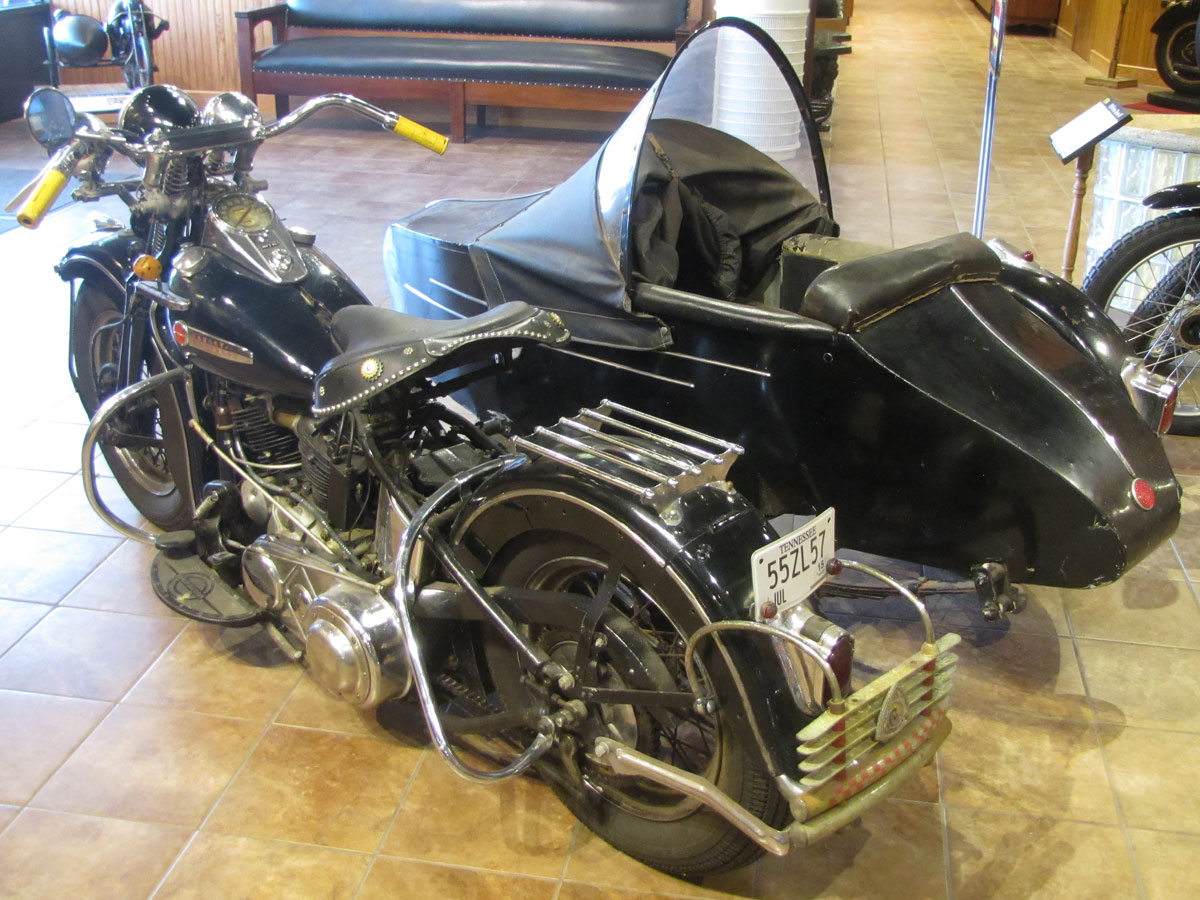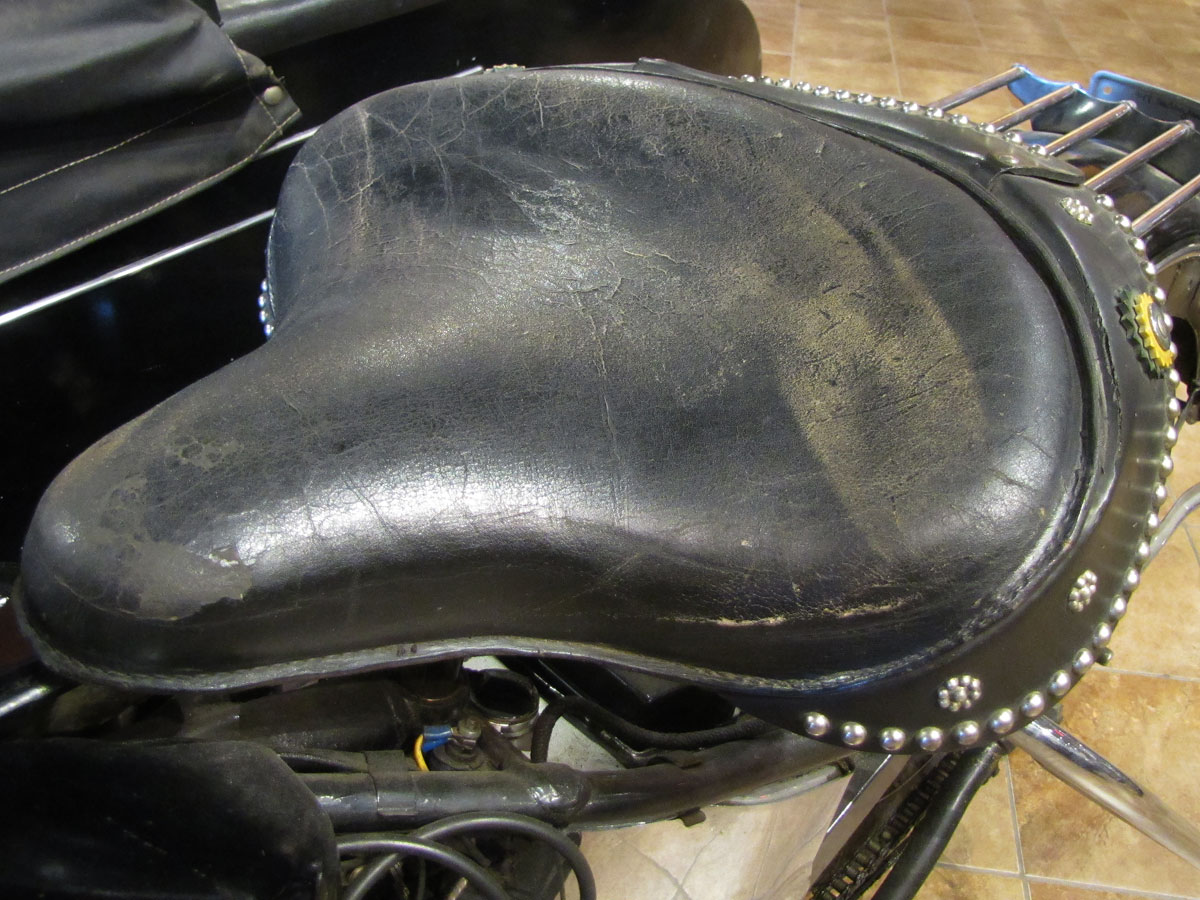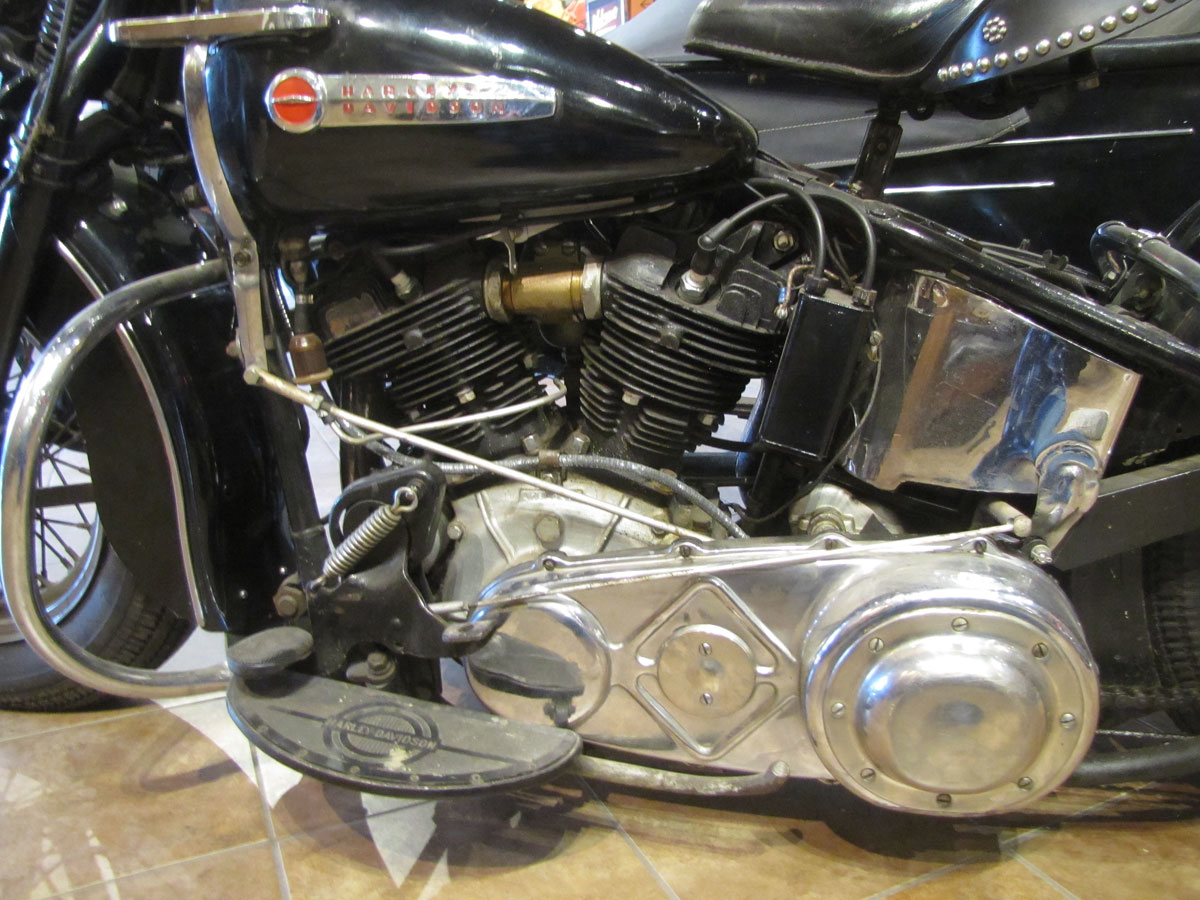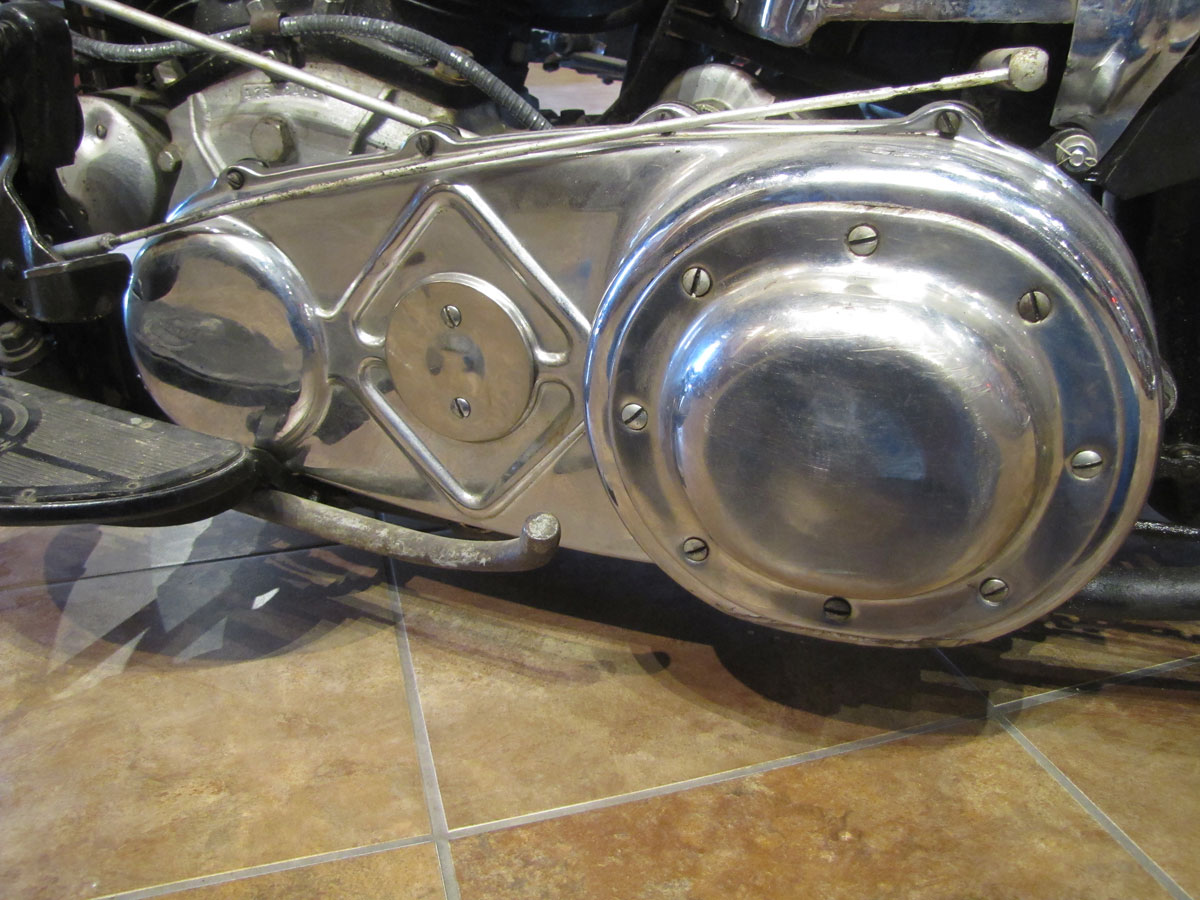
Nearing the end of “Knucklehead” engine production, and just a couple of years from a manufacturing hiatus due to World War II, in 1947 Harley-Davidson’s EL’s and FL’s were fairly refined machines. In 1931 engineering work had started on a new heavyweight touring bike design. Though this was the height of The Depression in America, Harley-Davidson knew it had to design and engineer to stay ahead of its rival, Indian. Continuing to maximize a motorcycle’s usefulness with a sidecar was part of that.
First offered in the 1936 model year, dubbed the E model, this was Harley’s original 61 cubic inch OHV V-Twin standard production engine. It incorporated Harley’s first recirculating lubrication system, used a completely new double down tube frame and stronger springer fork. There were some technical problems to work out with first year models, and looking at production records, three successive 1936 “versions” can be found. Styling advanced greatly and, today known as a Knucklehead, these Harley’s are looked back on as one of the Motor Company’s finest offerings.
For the first few years 18 inch wheels were fitted, but 16 inch wheels were typical when full production resumed after World War II. Colors were two-tone with pinstripes separating the colors early on, but most post-war bikes were painted in solid colors, red, blue and black being most popular.
There are many ELs and FLs, 1936 to 1947 in the National Motorcycle Museum to make comparisons with, in addition to “Knucklehead” engines displayed on the Motor Wall. This sidecar rig is on loan from musician Dan Auerbach, but there is also a red 1947 Knucklehead sidecar rig donated by Frank Webb on display.
Specifications:
-
- Engine:Air-Cooled, Overhead Valve, 45 Degree V-Twin
- Displacement: 61 Cubic Inches / 988 cc’s
- Bore & Stroke: 3.31″ x 3.50″
- Compression Ratio: 7: 1
- Horsepower: 40HP
- Carburetion: 1.25″ Linkert
- Primary: Duplex Chain
- Transmission: 3-Speed w/ Reverse, Hand Shift
- Clutch: Dry, Foot operated
- Final Drive: Chain
- Brakes: Drum, Front & Rear
- Electrics: 6 Volt Battery, Coil & Points
- Frame: Steel / Double Down Tubes
- Sidecar: Harley-Davidson
Leave a Reply
Want to join the discussion?Feel free to contribute!

































Please feature MORE sidecar rigs.Is that an engine cooler on the rear? Since Trikes have taken over, sidecars are getting to be scarce. My Friendship 1, was the last sidecar out of Calif. in 1998 and is no longer made, with no spare parts.You have a fantastic museum and I’m sorry it had to close.
Alan,
Thanks for the note. We have several Harley sidecars rigs in the Museum, plus a pretty rare Pannonia with a Derny sidecar. We will keep in mind your sidecar interest!
I think the unit on the back of the Harley you are referencing is simply a fender guard, though I can see how you’d consider it an oil cooler being finned, connected to tubes, etc.
While the Museum is closed due to the Pandemic, we hope you keep in touch via email and these weekly “newsletters.” We look forward to reopening, but like others, have no idea when that will be.
Thanks,
Mark
If you have any interest in motorcycles, the museum is a must-visit/must-see. We visited last fall and spent the day. So much good “stuff” it was almost a challenge to take it all in ! Keep up the good work.
Seeing this sidecar rig brings back some fond memories. Some 30 years ago, I, my wife and two children toured a good part of the western United States in a sidecar rig. We towed a small cargo trailer behind, climbing, and camping in many of the highest peaks in the Rocky Mountain. These were some of the our most happy times. Please keep posting such pictures of motorcycles of the past.
Any of these bikes have a reverse gear?